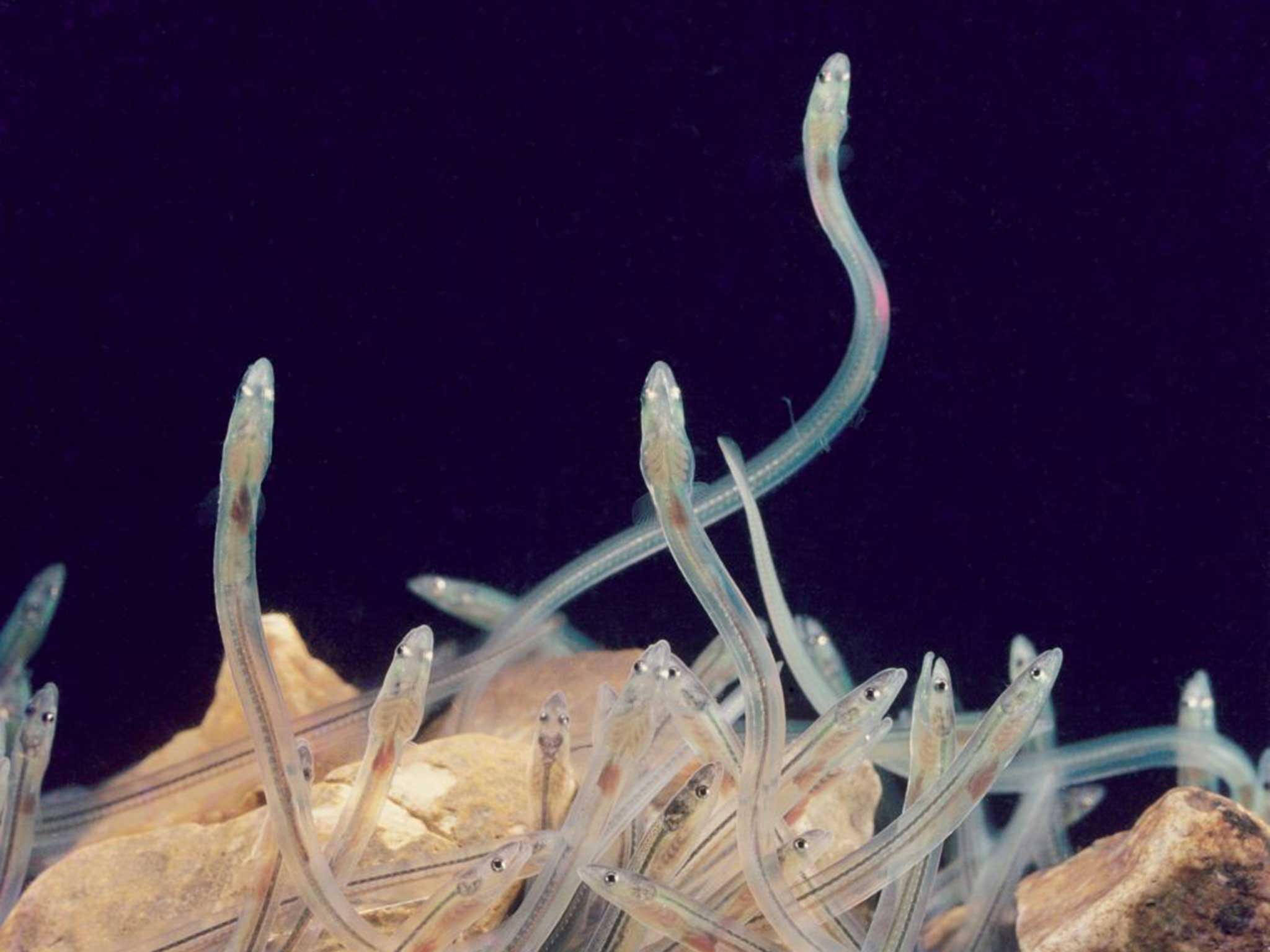Conservationist's claims that European eels are 'critically endangered' challenged by trader
Peter Wood, who owns the Gloucester-based UK Glass Eels, says that since the IUCN designation in 2010, the market has shrunk by 50 per cent

The conservation body that assesses the level of threat to animal species has been reported to the Advertising Standards Agency (ASA) by a company that sells eels – for describing the fish as "critically endangered".
The classification, by the International Union for Conservation of Nature (IUCN), suggests the European eel is at greater risk of extinction than giant pandas, blue whales and mountain gorillas, all considered to be merely "endangered".
Peter Wood, who owns the Gloucester-based UK Glass Eels, which sells eels as food, said that since the designation in 2010 the European market for eels had shrunk by 50 per cent.
"There's a lot at stake," he said. "The eel classification is damaging. It's not a balanced view and it's not evidence-based. The giant panda is 'endangered', but it's at far greater risk than the eel – there are only 2,000 of them left. For the eel, we are talking about a population of hundreds of thousands of millions."
In a letter to the ASA, he wrote: "It [the IUCN] has a strong bias towards conservation. Its funding is dependent on a conservation agenda and it is supported in part by conservation NGOs such as WWF."
Eels suffered a steep decline from the early 1980s with a severe drop in the number of glass eels – young eels, known as elvers, or glass eels, from their transparent appearance – reaching European shores from the Sargasso sea, where they are believed to spawn. Over the past few years, numbers have started rising again. On the river Severn, 30 million were caught this year compared to one million in 2009.
A spokeswoman from the ASA said: "The complainant is concerned that the IUCN's advertising, specifically their Red List, which lists the European eel as critically endangered, is misleading."
The IUCN did not respond to a request for comment, but its website says there have been "substantial declines" of 90 to 95 per cent "in recruitment of the European eel across wide areas of its geographic range" during the past 45 years. However, it admits that there is a shortage of information about the state of the eel population's health.
Subscribe to Independent Premium to bookmark this article
Want to bookmark your favourite articles and stories to read or reference later? Start your Independent Premium subscription today.

Join our commenting forum
Join thought-provoking conversations, follow other Independent readers and see their replies